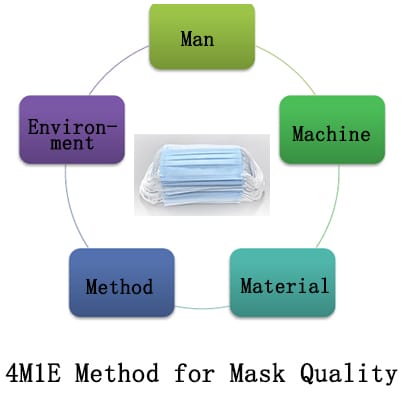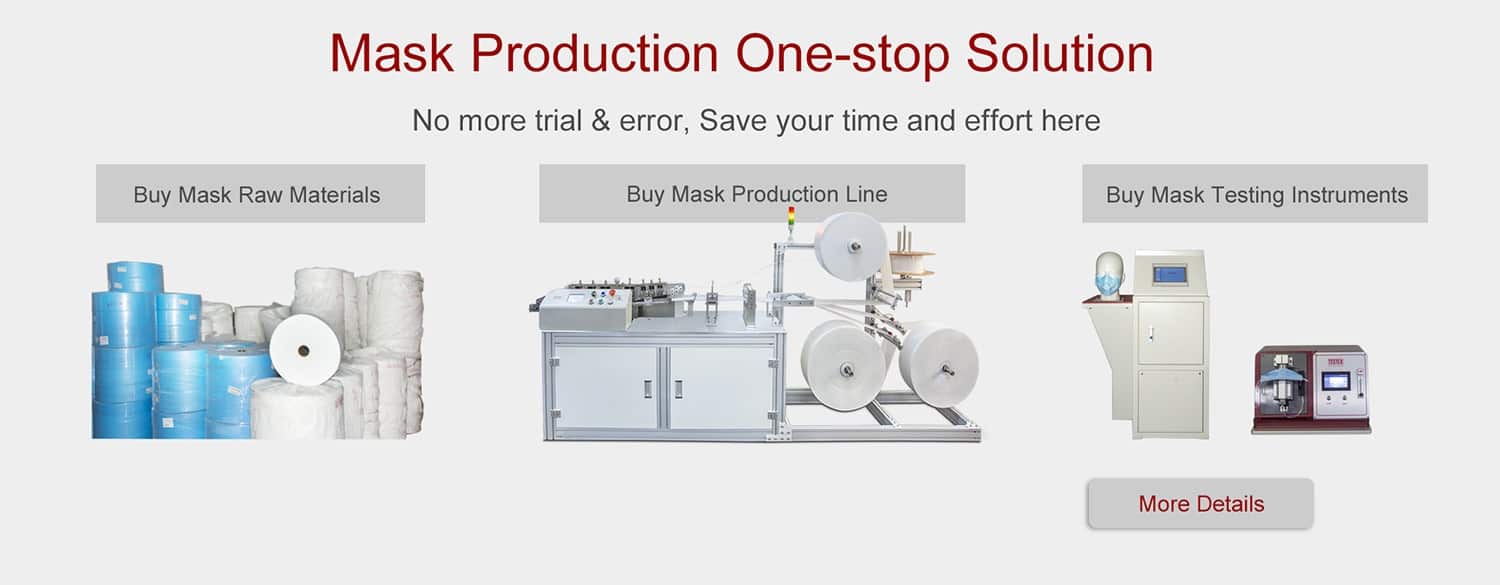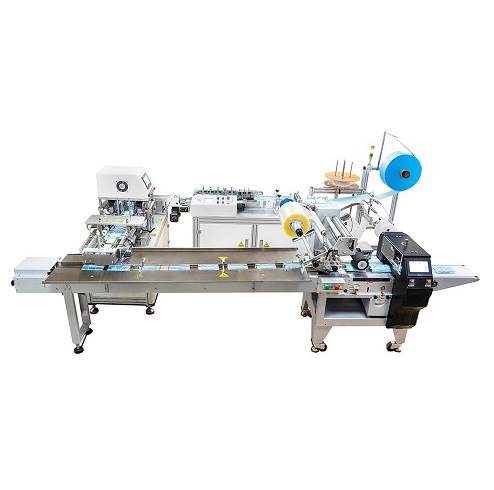Now, mask factories in European and American countries are facing some pressure: on the one…
Five Elements for Mask Quality: 4M1E Method
In the mask production process, the mask size is not stable, earbands are long and short, the breathing resistance varies greatly in the same batch mask, the filtration efficiency of the same mask even change….. How exactly did these questions come about? And what should be done?

Table of Contents
1 What should be included in the quality of an eligible face mask?
Safety performance requirements
| Particle filtration efficiency | Anti-virus, anti-bacteria, anti-flea |
| Low respiratory resistance | Prevent damage to the lungs, with differential pressure testing or respiratory resistance testing |
| Anti-blood infiltration | Preventing medical personnel from being infected by blood spatter while at work |
| airtight | Moderately stiff nasal strips and a good fit of the mask to the face, reducing external airflow directly into the mask |
Wearing comfort requirements
| Don’t bother the ears | Elastic, medium length Earloops |
| No facial irritation | Soft inner material and the right size mask |
| No unpleasant smell | Does not irritate the respiratory tract |
Other performance requirements
Mechanical strength (longitudinal and transverse tension), ear band tension, flammability, color fastness, cleaning and sterilization, dead space, and more.
The above quality reference standards for masks are
China Standard: GB 2626, GB 32610, YY/T 0969, YY 0469, GB19083
EU Standard: EN 149, EN 14683
USA Standard: NIOSH Standards (Title 42 CFR Part 84), ASTM F2100
2 Why do you need to guarantee the quality of a face mask?
Improved economic efficiency: marketed and sell, no blacklisting. Good quality control of masks, reduce the number of tests, shorten the time to market sales, one step faster.
Safeguard life safety: filter viruses, filter bacteria, anti-flea, anti-blood penetration. Good breathability, comfortable to wear, will not cause lung damage.
3 How to produce a qualified face mask?
Five factors affecting the quality of qualified masks: man, machine, material, method, environment. The five factors are interlocked and affect each other as one.
| Factor | Requirements | Difficulty | Weight |
| Man | Debugging machines, replacement materials, etc. | The more complex the mouthpiece machine, the more difficult it is | 30% |
| Machine | Reduced defect rate | Harmony and stability between machine parts | 30% |
| Material | Performance and specifications | High technical content, few qualified materials on the market | 30% |
| Method | Some production experience | Someone to minimize the difficulty. | 5% |
| Environment | A cleanroom of certain cleanliness, temp and RH | One-time investment, relatively simple | 5% |
The weight in the above table is based on our experience with the actual production of masks and does not represent the real value, it is just a reference. We’ve collected some of the problems that arise when producing masks for mouthpiece machines, as well as some of the feedback and inquiries from customers looking for a solution. The solutions are given and hopefully, these will help you.
| Problem | Causal Analysis | Solution |
| The mask incision is not centered | The fabric cutter was not adjusted to the proper position. | Rotate the cutter control button to adjust clockwise or counterclockwise as desired. |
| Mask size instability | As the diameter of the mask fabric roll became smaller, the torque became smaller, resulting in additional force acting on the longitudinal length of the fabric, causing stretching, and as it was stretched taut, the mask body was welded and cut, with subsequent retraction of the length in its natural state, resulting in a smaller length.
The intrinsic cause is that the physical properties of the non-woven and meltblown fabric are not appropriate and the longitudinal elasticity is not in a reasonable range. |
The frictional resistance applied on the fabric roll varies according to its diameter, which has been solved by the latest TM120 machines.
Use fabrics that have a reasonable longitudinal tension test result. |
| Transverse folds and cracks in the mask piece | In the process of producing 3 creases in the mask sheet, the fabric was too brittle due to insufficient lateral elasticity, resulting in fracture. | Purchase fabric with the required transverse tension. |
| Mask piece, unevenly hemmed and wrapped | The reel of the fabric roll is not fixed properly, and the fabric roll often wobbles left and right, resulting in uneven wrapping. | Check the reel fixation for looseness, etc. and make sure the 3 layers of fabric are in the correct position before folding. |
| Inconsistency in the left and right earbands of masks | Automatic earband welding machine: the left and right earbands convey different resistance, such as the left earband is often shorter than the right, not in the required range, the short side is elongated due to additional resistance, and after welding it retracts, resulting in insufficient length. | Check for additional resistance to the ear band delivery. |
| Inaccurate welding position of mask earbands, large deviation | Automatic welding machine: the length is unstable, resulting in a larger deviation of the mask piece when welding.
Manual welding machines: related to worker proficiency. |
Try to use an automatic welding machine and solve problem 2 to ensure that the mouthpiece pieces are uniform in length and that the lateral and longitudinal displacement on the automatic welding track is within the deviation allowance. |
Only a small percentage of the problems that occur in mask production is due to process equipment, most are due to incorrect sourcing of raw materials, and these problems can only be better identified through actual production and testing feedback, which is why the solutions for mask production have been iterative of TESTEX.
On the one hand, TESTEX minimizes the number of production interruptions by improving the masking machine and approaches the maximum capacity of the masking machine, which meets the optimal production. On the other hand, TESTEX establishes corporate standards for raw materials for masks and provides raw materials with the right specifications to solve quality issues such as filtration efficiency, breathing resistance, synthetic blood penetration (medical masks).
Appendix: Quality Control System for Face Mask of TESTEX
Testing instruments for the face mask
Corporate standard of earloop: Check the TESTEX mask earloop standard (Download as Pdf):
Corporate standard of meltblown fabric: Testex Meltblown Standard (Download as Pdf)
Corporate standard of nose wire: Download the metal nose wire standard PDF
Corporate standard of PP-Nonwoven: Download TESTEX PP-Nonwoven Quality Standard





This Post Has 0 Comments